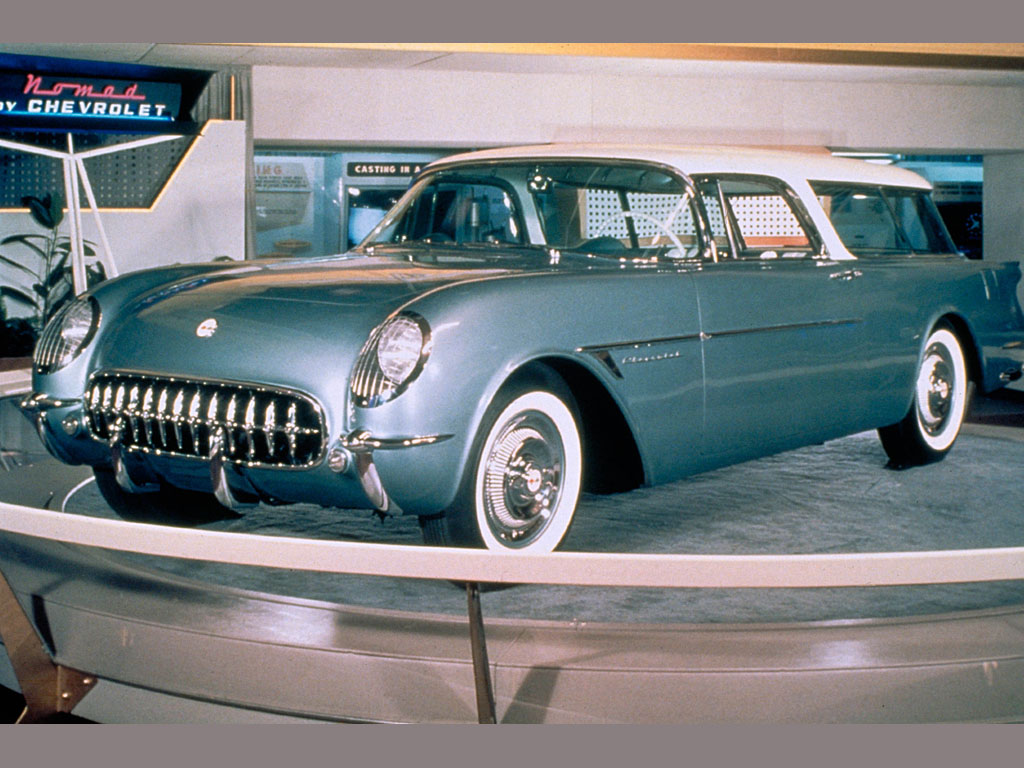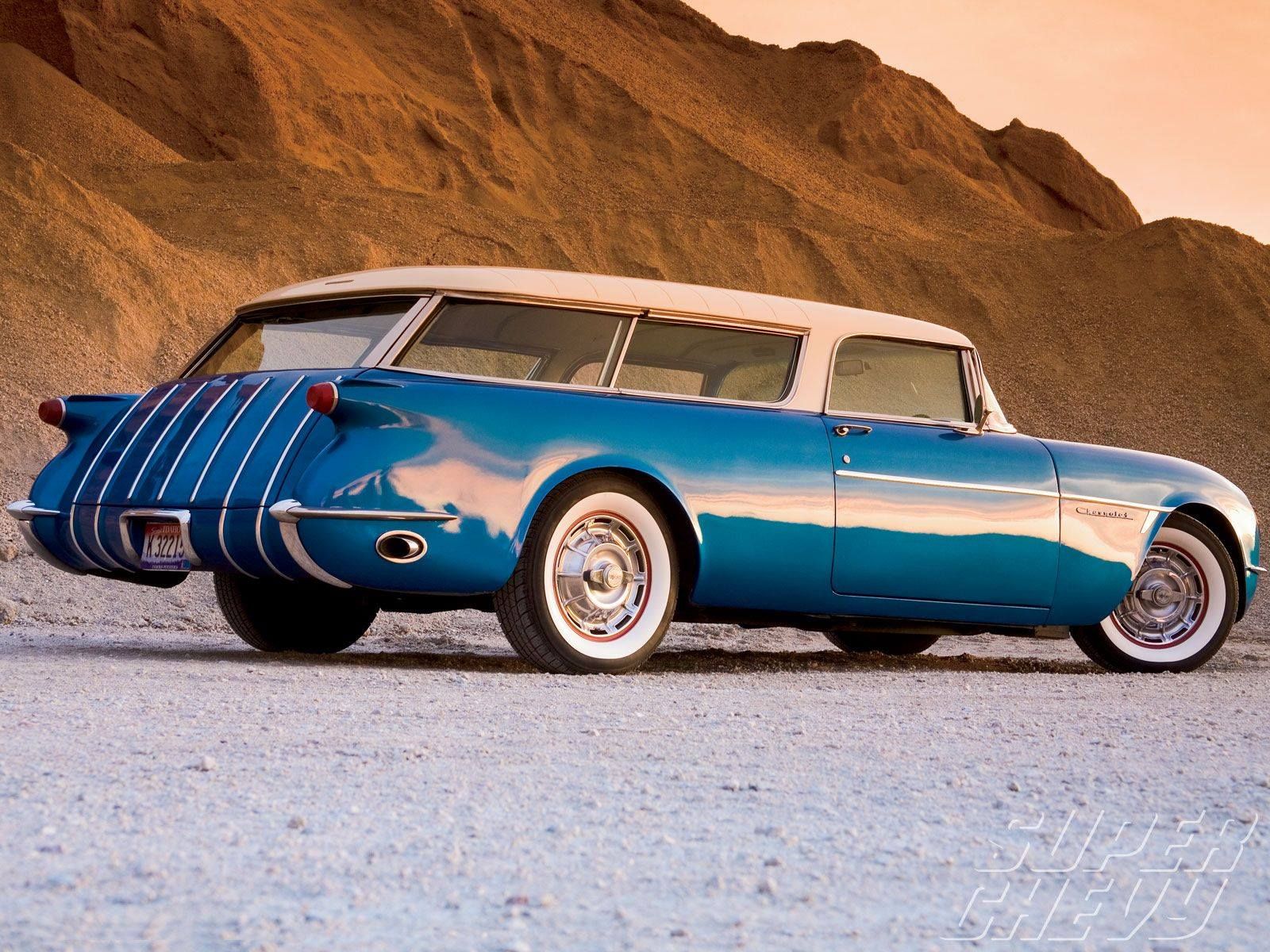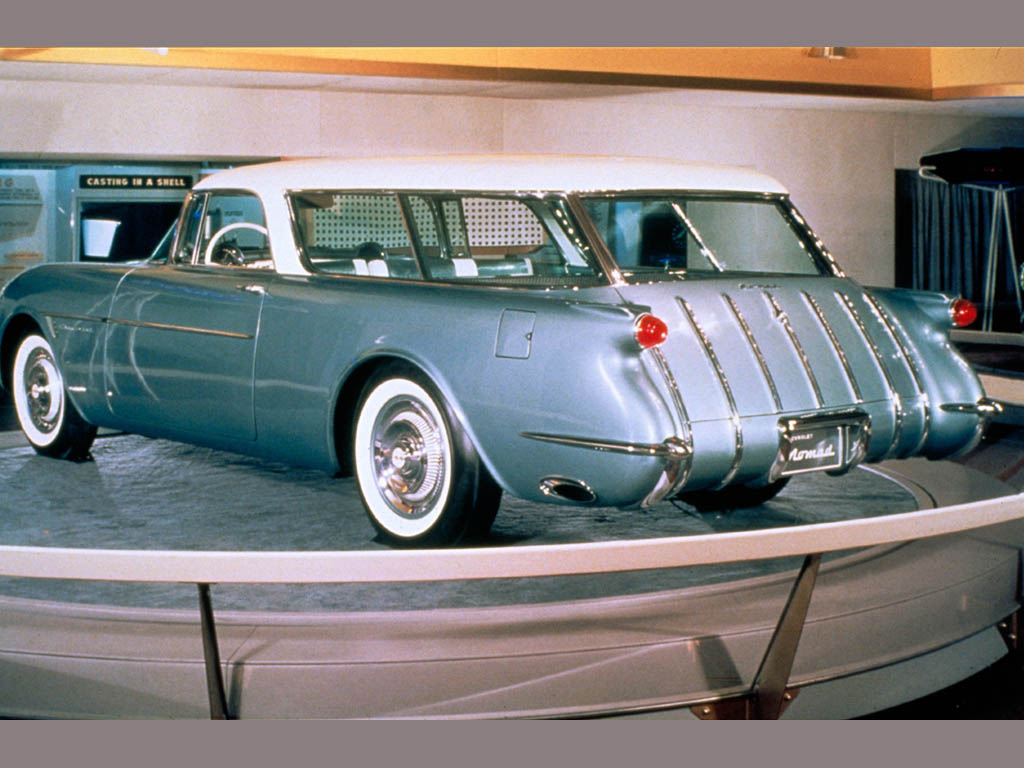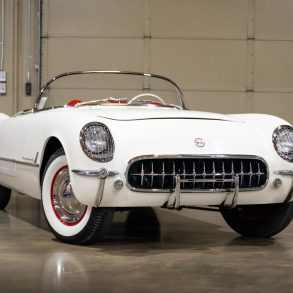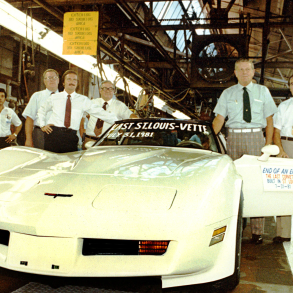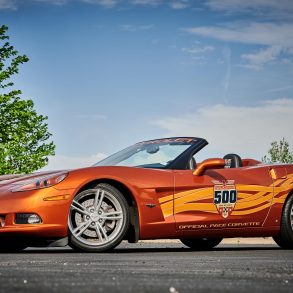1953 Chevrolet Nomad Concept Car
While much has been written on the Corvette’s continual development, far less attention has been given to the influence that such development has had on various other GM product lines throughout the years. In many cases, GM has taken Corvette concepts that were not selected for production, and scaled such designs into separate product lines of their own.
One example of a vehicle that few realize actually began life as a Corvette concept, is the Chevy Nomad. The Nomad is often remembered today in its Tri-Five form, and carries an immense following among vintage collectors. However, the prestigious wagon’s earliest days are deeply rooted in Corvette lore.
An Extension of the Corvette
On the heels of the Corvette’s release in 1953, Chevrolet looked to up the ante, and create depth within their new line of American sports cars. As a result, 3 individual concepts carrying the Corvette name were prepared for the 1954 Motorama show in New York City, one of which being the Nomad. The Nomad was displayed alongside the Corvette Hardtop and the Corvette Corvair.
In total, 5 Corvette Nomads were prepared for the 1954 show circuit, of which only 3 are known to still be in existence. The Nomad received a substantial amount of fanfare during the 1954 show season, and was heralded by many for its mix of practicality and sporty looks.
The 1954 Nomad featured a front-end that was virtually identical to that of the 1953 Corvette before it, complete with rounded headlights and gently sloping front fenders. Atop the Nomad’s Corvette-like body set a sleek roof, which was white in color and featured forward-slanting B-pillars.
At the time of its debut, the Corvette Nomad was thought of as being Chevrolet’s answer to the Ford Country Squire, which had received much acclaim, despite its rather conservative looks. By providing consumers with a spacious wagon that was also rich in aesthetic appeal, Chevrolet hoped to capture the lion’s share of the market.
From Concept To Production
Basing his decision upon the public’s enthusiastic response at Motorama, Harley Earl ordered the Chevrolet design studio to fast-track the Nomad for production in time for the 1955 model year. However, rather than carrying the Corvette name, the Nomad became a standard model offering, falling more closely in line with Bel Air production. This was a decision that was handed down by top GM brass, in a bid to bolster sales and better compete with the offerings of various other manufacturers.
The Nomad was first offered to the public during the 1955 production year, with sales continuing through 1957. However, sales figures never reached peak values anticipated by Chevrolet, leading to the two-door Nomad Sport Wagon’s discontinuation before the 1958 model year.
The Nomad moniker would continue to be employed through 1961, denoting all Chevrolet top-line four-door station wagons. This practice would end prior to 1962 production, as all Chevrolet station wagons would adopt the names of their regular sedan models.
A Corvette Derived Classic
The Nomad name would again come to prominence, on two separate occasions in the 1960s and 1970s. From 1964-1965, the two-door mid-sized Chevelle 300 station wagon carried the Nomad designation, while the name would also be applied to all base model station wagons within the series from 1968-1972.
Today, the Chevy Nomad serves as the centerpiece in many Tri-Five enthusiasts’ collections, showcasing a unique blend of intrinsic styling and innate functionality. However, we likely would never have had the opportunity to relish in the Nomad’s originality, had it not been for the ongoing design efforts of Harley Earl and his team, when pursuing further development of the Corvette.
